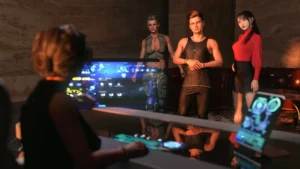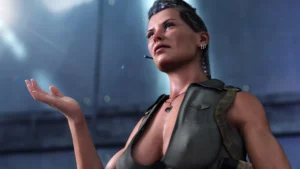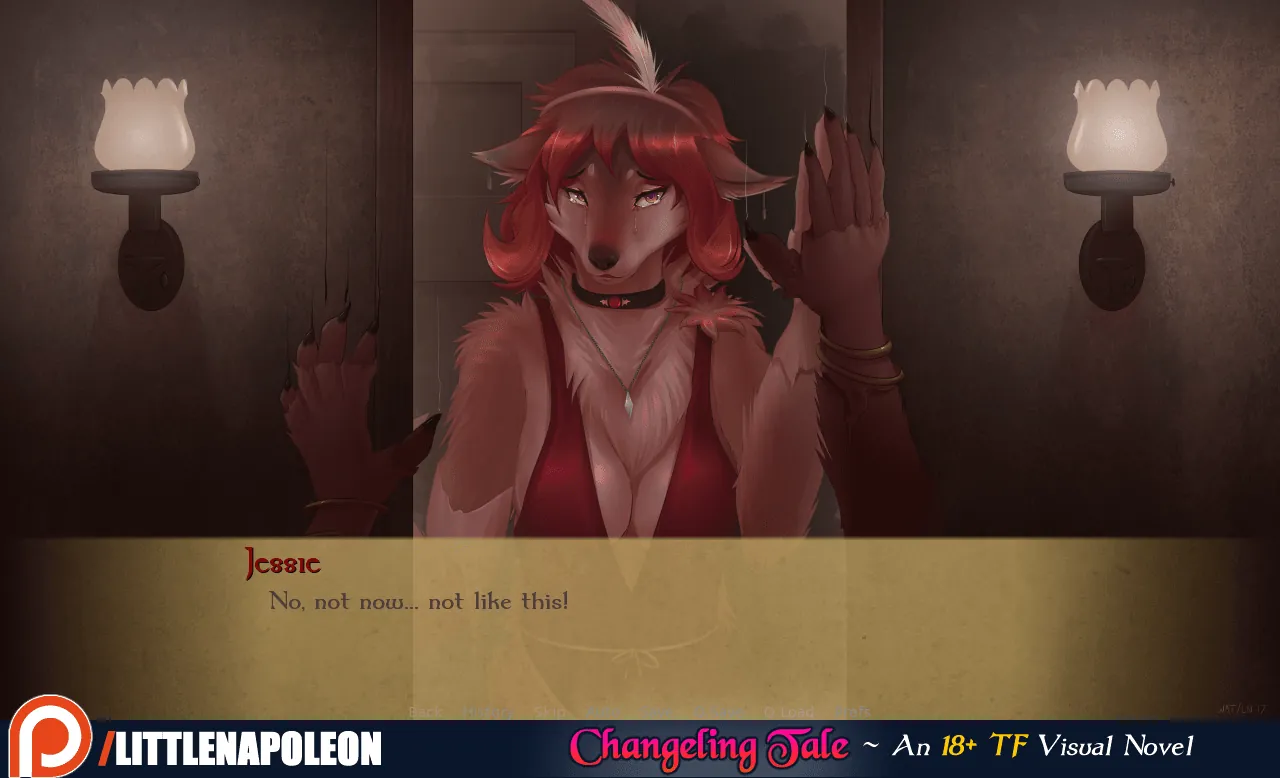
How to Fix the Future
Play How to Fix the Future
How to Fix the Future review
Unlock the secrets of this immersive adult adventure—master the story, choices, and relationships in How to Fix the Future
Ever dreamed of escaping a dull life for a world where your choices shape the future—and your relationships? That’s the heart of How to Fix the Future, a sci-fi visual novel that blends gripping storytelling, deep character connections, and interactive decision-making. You play as an ordinary guy whose life takes a wild turn when mysterious forces from the future pull him into a mission to save humanity. Along the way, you’ll navigate office politics, forge alliances, and explore romantic possibilities with a diverse cast. Whether you’re new to the genre or a seasoned player, this guide will help you get the most out of your journey through How to Fix the Future.
What Is How to Fix the Future? Exploring the Premise and Setting
Ever find yourself staring at your computer screen, completely fed up with your day job, and dreaming of something more? 🚀 I’ve been there. That’s exactly why the premise of How to Fix the Future hooked me from the very first click. This isn’t just another sci-fi visual novel; it’s a deeply personal journey that mirrors our own secret desires for a more meaningful existence, wrapped in a thrilling package of time-bending adventure.
At its heart, the How to Fix the Future story is about the duality within us all. You play as someone stuck in a monotonous, soul-crushing routine by day, only to become a pivotal agent of change by night. This dual life gameplay is the core mechanic that makes every decision, from what you say to your coworker to how you handle a temporal paradox, feel monumentally important. It’s a masterclass in interactive storytelling where your choices don’t just change a dialogue tree—they reshape the timeline itself.
A Dual Life: Mundane Days, Extraordinary Nights
The genius of this sci-fi visual novel lies in its brutal, relatable contrast. Your days are spent in a painfully ordinary office environment, dealing with tedious tasks and office politics. 😫 You’ll manage your energy, budget your meager salary, and engage in small talk. I remember one playthrough where I was so focused on a mission that I neglected my day job, leading to my character getting a formal warning. This directly limited my resources for that night’s critical time travel missions, teaching me a hard lesson about balance.
But when the clock strikes a certain hour, your real work begins. You are recruited by a clandestine organization tasked with preventing a catastrophic future. The transition is seamless; one moment you’re fetching coffee, the next you’re calibrating a device that will send you across centuries. This dual life gameplay isn’t just for show—the skills you hone and the relationships you build in your mundane life can directly aid your secret endeavors.
The game brilliantly forces you to juggle these two worlds. A connection you make with a colleague could reveal a piece of historical data crucial for a mission. Conversely, an item you secure in the past might solve a pressing problem in your present-day life. This interconnectedness is what makes the How to Fix the Future story so compelling and its interactive storytelling so rich.
| Daily Life Activity | Secret Mission Objective | Impact of Your Choices |
|---|---|---|
| Networking at a company party | Gathering intel on a future corporate magnate’s origins | Choosing who to befriend can unlock new mission paths or close others permanently. |
| Managing your personal finances | Acquiring rare components for your time travel device | Spending too much on social outings may leave you unable to afford crucial gear. |
| Completing tedious data entry tasks | Decoding encrypted messages from a different era | Success at your job can improve your focus and problem-solving skills for missions. |
| Building rapport with your landlord | Preventing a historical event that creates a housing crisis | A positive relationship in the present can provide a safe haven, while mission failures can make your current life harder. |
The Sci-Fi Twist: Time Travel, Secret Missions, and Saving the World
So, what’s the big threat? Without spoiling too much, the future is… broken. 🕰️ Something has gone terribly wrong with the timeline, and it’s your job to be the universe’s repair technician. The sci-fi visual novel framework allows for a stunning variety of settings—from gleaming, dystopian megacities to pivotal moments in a past that feels vividly alive.
The time travel missions are where the game truly shines. You’re not just a passive observer; you’re an active participant who can alter events. I once spent an entire mission trying to save a single historical figure, only to discover that their “accidental” death was a fixed point in time. My attempts to save them created even greater chaos, a poignant reminder that playing god has consequences. This is the essence of the How to Fix the Future story—it’s not about finding a single “correct” path, but about navigating the moral and practical complexities of your actions.
The stakes couldn’t be higher. Failure isn’t just a “game over” screen; it’s a tangible degradation of the world you return to. The sky might be a different color, a beloved character might no longer exist, or your own memories might begin to shift. This constant, palpable risk elevates the interactive storytelling beyond mere branching narratives into a truly immersive experience where you feel the weight of every decision.
Meet the Cast: Characters Who Remember Your Choices
What truly brings the How to Fix the Future story to life is its incredible cast. This isn’t a world of static NPCs; these are complex individuals with their own ambitions, fears, and secrets. The character relationships you cultivate are the emotional backbone of the entire experience. 💖
Every interaction is a building block. The game has a sophisticated memory system, meaning characters will recall your promises, your betrayals, and even your off-hand comments from many hours prior. I learned this the hard way when I casually agreed to help a colleague with a project, then repeatedly blew them off for more “important” missions. Later, when I needed their expertise to decrypt a vital message, they refused, citing my unreliability. It was a stunning moment that solidified my belief in the game’s depth.
Your romantic choices are a major part of this web. Whether you’re drawn to the brilliant but cynical scientist who invented the time travel tech, or the compassionate historian from the past who is displaced in your timeline, each relationship path is a unique story in itself. These aren’t simple flirtation options; they are deep, narrative arcs that explore themes of trust, sacrifice, and what it means to connect with someone across the boundaries of time.
Pro Tip: Take your time with dialogues. The most impactful character relationships are often built not through grand gestures, but through consistently showing you care about the small things in their lives.
Here’s a look at some of the key personalities you’ll encounter and how your choices shape your bonds with them:
-
Dr. Aris Thorne: The genius behind the temporal technology. He is pragmatic to a fault and often views human history as a series of data points to be corrected. 🧪 Your romantic choices with him involve breaking through his logical exterior to confront the guilt he carries over his creation’s potential for misuse. Choosing to support his more reckless experiments can bring you closer, but at what cost to the timeline?
-
Elara Vance: A sharp-witted and resourceful field agent from a fractured future. She has seen the worst outcomes and operates with a hardened, survivalist mentality. 🔧 Building trust with her requires proving your competence and resolve during time travel missions. Showing vulnerability or hesitation can cause her to question your partnership, impacting mission success.
-
Leo Larsen: Your cheerful and seemingly simple coworker from your day job. 😊 Don’t be fooled by his easygoing nature; your interactions with him can have surprising ramifications. Choosing to confide in him or keeping him in the dark creates vastly different narrative branches, demonstrating how the dual life gameplay intricately connects.
-
Maya (The Historian): A woman you can encounter—and potentially rescue—from a key moment in the past. Her perspective is invaluable, but her presence in the modern world is a temporal anomaly. 📚 Your romantic choices with her are a delicate dance of helping her adapt while respecting the profound loss she has experienced. Deciding whether to try and return her to her own time is one of the game’s most emotionally charged decisions.
The brilliance of this sci-fi visual novel is how it weaves these personal dramas into the grand tapestry of saving reality. You’re not just making romantic choices; you’re deciding which values—logic, hope, rebellion, or tradition—will guide you in mending the broken future. The How to Fix the Future story understands that saving the world is meaningless if you have no one to share it with, making every connection, and every consequence, deeply personal. ✨
How to Fix the Future stands out as a sci-fi visual novel that masterfully blends everyday drama with epic, time-bending stakes. Its rich storytelling, memorable characters, and meaningful choices create an experience that’s as emotionally engaging as it is visually impressive. Whether you’re drawn to the intricate relationship webs, the strategic gameplay, or the stunning 3DCG renders, there’s plenty to discover—and your decisions truly shape the outcome. Ready to start your journey? Dive in, experiment with different paths, and see how your choices ripple through time. Don’t forget to share your stories with the community and keep an eye out for what’s next from developer mr.moonmi.




















